Right this second, your systems are processing a dearth of data. The rate at which data is generated today is unbelievable—328.77 million terabytes every single day.
But the real question is—is all this data useful for your business?
And more importantly, can you use it to make critical decisions?
And what’s the path to turning this data into actionable insights?
If your response is “no”, you’re hardly alone.
As much as 34% of data leaders face data discovery challenges. Essentially, they’re unaware of the data in their system or don’t know who has access to what data point. Also, 82% of businesses are making decisions based on redundant data.
In times when data is of vital importance, wasting any opportunities to make the most of it can severely impact revenue.
It’s time to move from an “I think this is what needs to happen” to an “I know this is happening based on accurate, contextual and measurable data” approach.
In our recent conversation with Vinny Poliseno, we found answers to some key questions about how companies can turn data into actionable insights. As the co-founder and VP RevOps Strategy & Architecture at scaleMatters, Vinny is right in the thick of things. He has helped organizations accelerate their revenue growth by making data more actionable.
This blog extracts insights from our conversation. You can view the full-length episode below.
What is an Actionable Insight?
To understand this concept, let’s get through the basics first.
“Data” is the statistics, facts, numbers, video, audio and text (and more) collected through observation.
On its own, it’s difficult to interpret and, therefore, is of little help.
“Insight“, on the other hand, is when you consume data, analyze it and interpret it accurately within its context.
Taking that further, “actionable insights” are insights combined with experience and expertise that empower you to take definitive action and solve problems.
Here are some examples of how actionable insights come in handy for business.
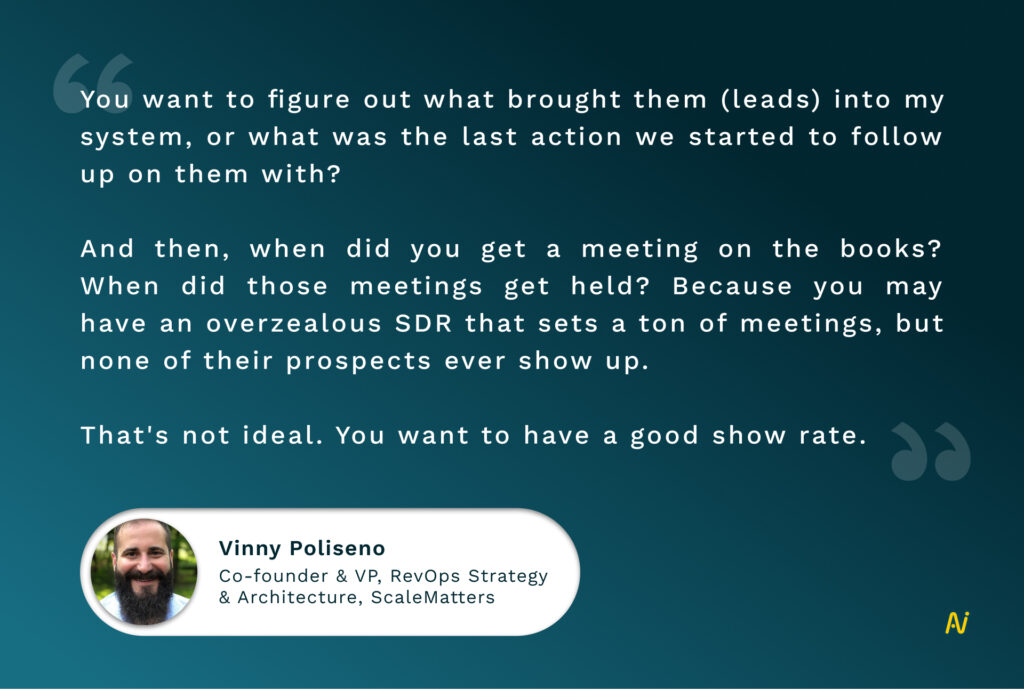
Why Do I Need to Be Turning Data Into Actionable Insights?
In a business environment as competitive as today’s, having actionable insights is critical. And it’s benefited organizations to a large extent.
Organizations leveraging data-driven insights are 8.5 times more likely to witness at least 20% revenue growth.
But why are actionable insights making a difference?
- For starters, you can take definitive steps to solve problems based on the available data. You make better decisions when they’re based on data and not gut feelings.
- Secondly, you’re more proactive in improving processes in the present and future.
- Staying in line with actionable insights lets you respond to changing situations quickly because you can spot trends and patterns faster.
- This also refines your forecasting, which becomes a competitive advantage—spotting trends and patterns before your competition gives you an edge in adapting strategies.
- You can then guide your revenue strategies to more successful outcomes.
- Moreover, you can boost operational efficiency by optimizing the allocation of resources.
- It improves customer experience and drives business and, finally, revenue growth.
I Can’t Seem to Turn Data Into Actionable Insights. What’s Wrong?
Let’s get into the meat of the problem.
You have the data (tons of it), but turning data into actionable insights is a herculean task. And every time you take a step forward, you only seem to be moving two steps back.
This may be occurring because your insights-generation path is littered with multiple roadblocks.
We shortlisted and expanded further on 4 important roadblocks below.
Challenge 1: Messy CRM Data
Maintaining clean CRM data is a complicated and time-consuming process. And it’s particularly stressful if you haven’t set up adequate documentation and workflows to enable smooth data capture.
As a business, you may end up collecting bad-quality data like:
- Inconsistent data
- Incorrect data
- Missing or incomplete data
- Corrupted data
- Mismatched data
- Duplicate data
If you don’t store CRM data properly, you may lose granular information, which clarifies your pipeline. This includes:
- Emails exchanged
- Context of these emails
- Contacts involved in a deal
- Individual roles of these contacts
- Pricing-related discussions
Other times, the data isn’t assigned to the right data fields. This only creates further problems as you lose historical data.
Another instance where your CRM data may lose relevance is during migration. You end up carrying decayed data from your old system into the new one.
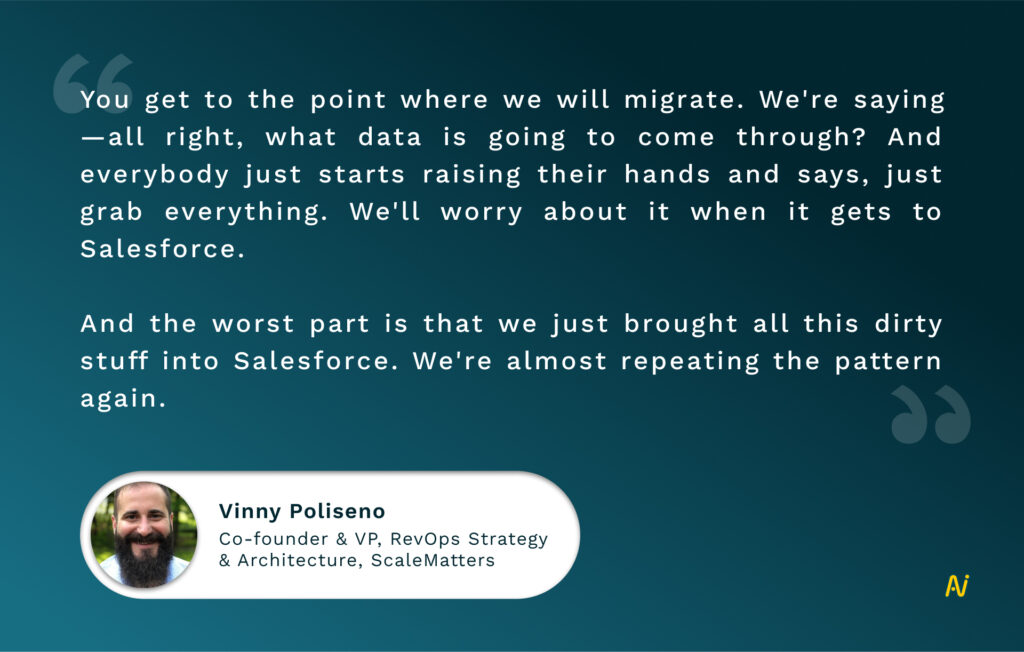
Ultimately, incorrect and ineffective CRM data, one that doesn’t let you turn data into actionable insights, translates to missed opportunities.
You can’t forecast accurately. Nor can you generate ROI from marketing and sales campaigns because they are targeted to the wrong ICP.
Plus, deal reviews are based on incorrect data that doesn’t do reps any good. Reps start losing out on productivity, generating poor customer experiences.
All of the above sums up why poor quality CRM data can pose a significant challenge to decision-making.
Challenge 2: Data Silos
Siloed data is one of the biggest challenges businesses face as they grow. A significant number, 90% of organizations, are grappling with data silos even today.
It crops up when each revenue team follows individual systems, workflows, tools and goals that don’t talk to each other. This makes data inaccessible to other groups.
The problems silos cause are more nuanced and boil over as misalignment issues among the teams. 25% of marketing and sales teams lack integration, courtesy of data silos.
To break down silos, organizations need a unified system of record that transforms data into usable revenue intelligence.

But cross-functional misalignment continues to dig its nails into the data problem. That’s because it’s tricky for leaders to overhaul years of resistance to change.
There also exists unhealthy competition between teams, fostering a lack of trust. It eventually culminates in “data ownership” rather than “data sharing, ” creating a rift.
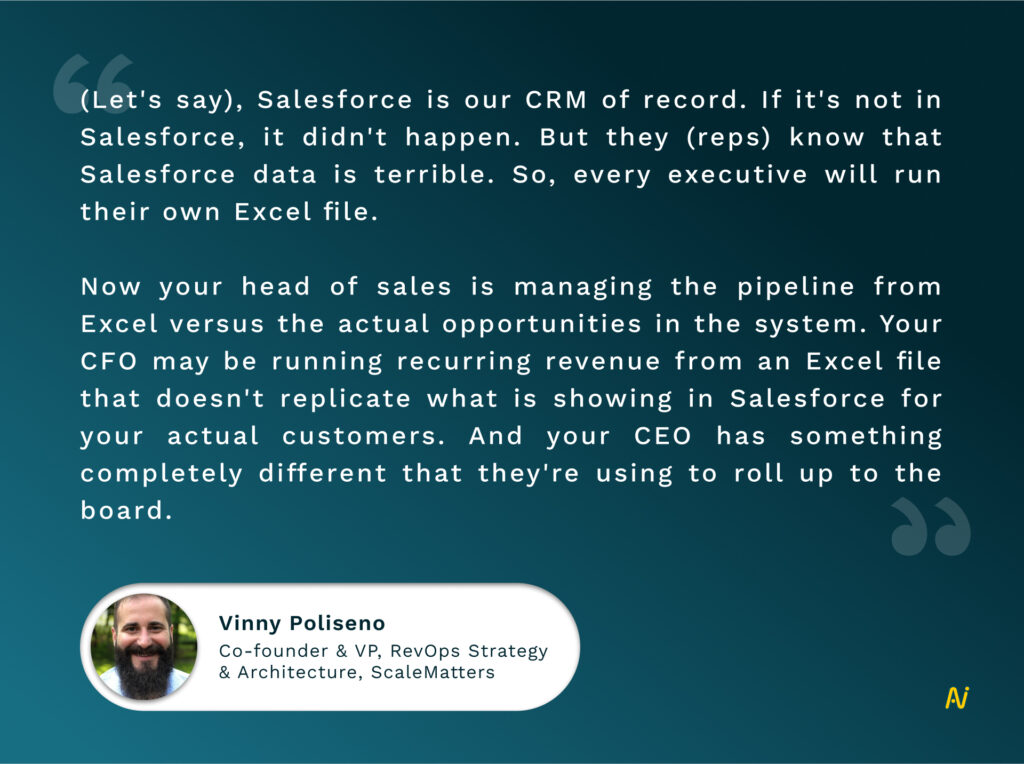
Lack of visibility into the customer journey means teams can’t provide unforgettable buying experiences. They can’t multithread with buying committees because they don’t have enough information about buyer personas, motivation and behavior.
The result?
31% of marketing and sales teams lack insights into the customer journey. And 36% of organizations attribute stunted business growth to fragmented data.
This threatens data integrity and wastes resources unfairly.
Challenge 3: Poor Data-driven Culture
It’s not always about having tons of data at your disposal. It’s about how qualitative that data is for making business decisions. This can only be made possible in an organization prioritizing a data-driven culture.
Poor data culture is a huge roadblock. But what’s surprising is that most leaders don’t take it seriously. 81% of business leaders don’t consider CRM data a high-priority initiative.
Not prioritizing a data-driven culture with shared goals and governance framework snowballs into low-quality data practices.
Such as incorrect data entries.
This festers bad data (incomplete, inconsistent, inaccurate, duplicate and non-compliant). For nearly half of sales reps (48%), incomplete data is their biggest challenge, closely followed by inaccurate CRM data (41%).
Poor data culture translates into disruptions in the revenue process. Miscommunication, missed opportunities, and wasted marketing expenses become commonplace. Data silos and a disparate tech stack only make it more complicated.
The worst that could happen is inconsistent handoffs at customer touchpoints. It spells a revenue disaster for sales, particularly. 56% of sales reps lose existing customers, and 51% lose new deals due to bad data in the CRM.
Leaders who don’t value data can’t make the best decisions. They must rely on unreliable data to generate actionable insights (which aren’t beneficial in the long run). 54% of sales and marketing teams can’t generate quality customer insights and intelligence owing to poor data quality.
Inefficient data culture equals inefficient decision-making and unsustainable revenue growth.
Challenge 4: Tech Stack Hassles
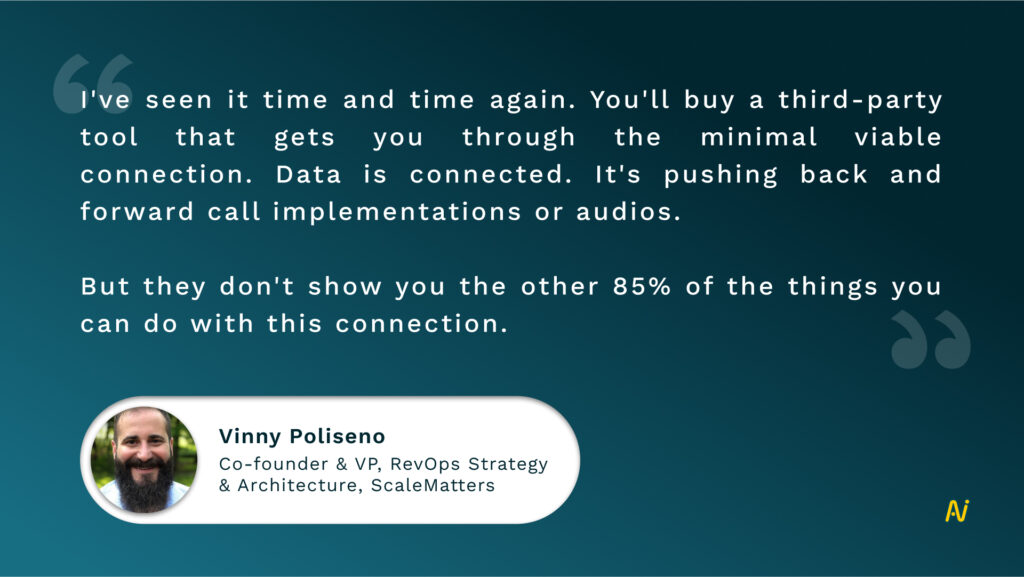
On average, your sales team uses 10 tools to win deals. That’s already a lot, but what adds to the problem is that each revenue function has its own set of tools. And these tools could be way more than the number above.
There’s also a significantly wide disconnect between managers and frontline teams. While 42% of managers think it’s clear which tools their team can use for a particular task, only 32% of reps agree.
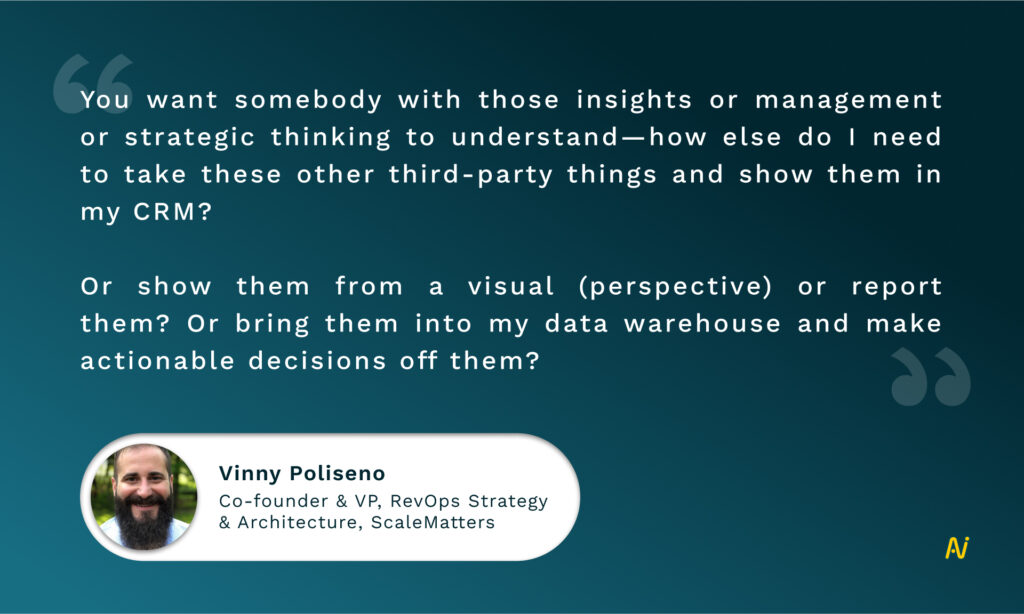
If you don’t pick the right tools as a revenue leader, you encourage leaks in your funnel. It leads to dissatisfaction with and distrust in the already large tech stack. As much as 71% of CSOs are not satisfied with the tools at their disposal.
And then, the cycle of adding more tools to the stack continues.
Bloated tech stacks do nothing but add more issues to the mix:
- Data inconsistencies
- Disintegrated systems
- Inability to track the customer journey
- No access to real-time insights
- Operational inefficiencies
- Extra burden on reps to implement tools
Ultimately, you take on a huge amount of tech debt, i.e., costs arising from inefficiencies in the tech stack.
With such massive roadblocks, how can you salvage your CRM data? RevOps has a few mitigation plans for turning your data into actionable insights.
Using RevOps to Drive Business Value With Data
RevOps covers marketing, sales and customer success operations and has a 360-degree view over the revenue funnel.
Its value becomes clearer when it turns data into actionable insights into customers, markets and KPIs. It connects the dots between data sources to set up processes, systems and tools to extract actionable insights.
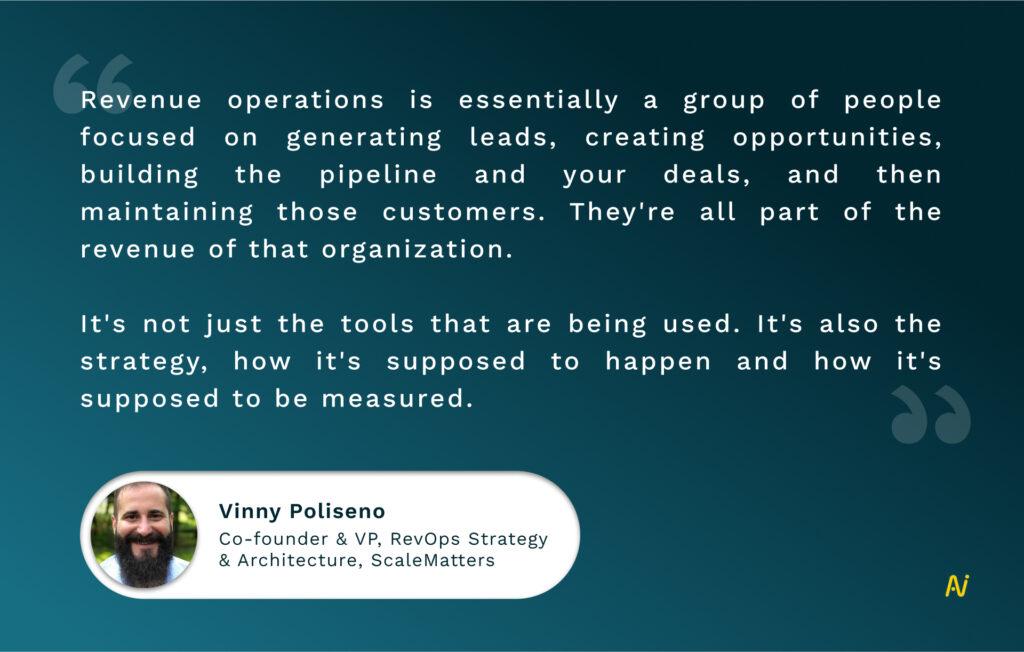
RevOps pushes teams to use clean and contextual data for decision-making. In the process, it creates organized ownership of data and GTM integration.
What’s the Best Way to Use RevOps For Turning Data Into Actionable Insights?
You can make the most of RevOps for turning data into actionable insights by taking a few strategic steps.
1. Set up a Data Governance Framework
RevOps aims to convert data from a liability (bad data) into an asset (quality data). It sets up a data governance framework to enable this—essentially a strategy to manage data across the customer journey.
Data governance outlines the organization’s data principles, roles and responsibilities, and structures for data control.
It integrates data from multiple sources by following a common data language.
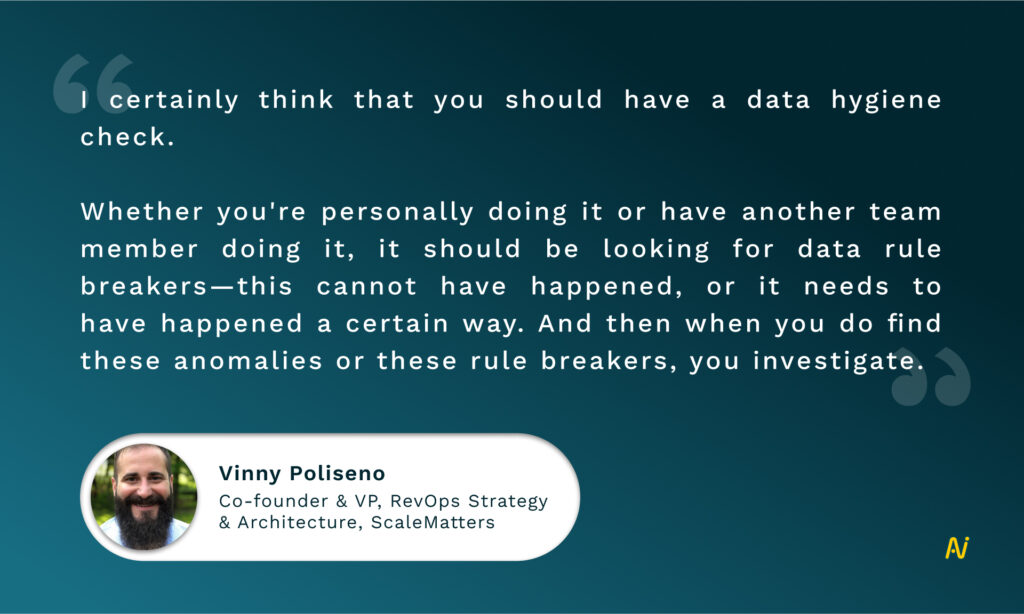
Data governance keeps data secure, usable, clean and reliable, making your insights more accurate. It also puts together regular data checkups, integration of disparate tools, and tech stack audits to solidify the CRM as a single source of truth.
2. Make the Best of Contextual Data
An important part of turning data into actionable insights is the opinion of the information at hand.
It’s about understanding “why” situations developed the way they did and how you can make the most of this information. Having the interpretation is more useful than just having the numbers.
In a nutshell, context is key.
You can understand the situation better and make the most informed decision when there’s context available. It also helps break down silos. There’s a free flow of information between teams that gives rise to impactful insights.
A good data strategy ensures there’s context for every data point. It shows you:
- What do the figures mean for you?
- Why do these numbers matter?
- How do they affect the business?
Aim to continually enrich, refine and improve your data quality with your strategy. Also, ensure that each team has access to important contextual information across the customer journey.
If you do this, you’ve already taken a significant step in the direction of how to turn data into actionable insights.
3. Streamline the Tech Stack
A tech stack today is the backbone of a solid RevOps function. You must deploy the right tools to make it work in your favor. And that’s not to say it’s all about the CRM.
Certainly, CRM is at the center of the stack, but it’s supported by several other tools having specific functionalities. These tools feed data into the CRM system.
Choosing the right CRM-adjacent tools is paramount for turning data into actionable insights. And it begins by streamlining the tech stack and removing redundant tools.

RevOps builds and refines the tech stack in a way that:
- Aligns cross-functional teams
- Reduces inconsistencies in data and processes
- Tracks the customer journey end-t0-end
- Enables access to real-time insights
- Makes decision-making more agile
So, how do you determine which tools are perfect for your tech stack?
Start by mapping requirements to your reps’ needs because they’re the end users. Also, highlight the tools’ benefits to all stakeholders in your teams.
Instead of using tools from a single solution provider, select the best of the breed from multiple sellers.
Some must-have tools include CRM (of course), sales enablement, conversational intelligence, marketing automation and customer data platform.
Avoid piling on tech that doesn’t produce ROI.
Test your tools periodically and improve your systems to scale resiliently.

4. Foster a Data-driven Culture
Changing your ways can be uncomfortable when you’ve been doing things a certain way for a long time.
Unfortunately, growth can’t wait too long.
You must facilitate a cultural shift to data-driven processes to turn data into actionable insights.
A data-driven organization is when everyone in the company understands the importance of data, the impact it drives and why you should democratize it.
You have to empower your teams to:
- Share executive-level metrics and insights
- Answer business questions instead of individual ones
- Guide executives to the solution and vice versa
- Leverage use cases of tools for insights
It shifts from viewing data as a chore to a strategic asset backed by people, processes, tech and systems. Employees gradually open up to accommodate common data frameworks and tech.
The more you embrace a data-driven culture, the better your insights and decision-making will be.
To round it up, the best ways to use RevOps for turning data into actionable insights is by:
- Setting up a data governance framework
- Making the best of contextual data
- Streamlining the tech stack
- Fostering a data-driven culture
Unlock the Power of Clean and Contextual Data
RevOps needs clean and contextual data to produce actionable insights. This makes investing in clean data important. Learn more about how RevOps can help you in this guide.
Nektar unifies and automates contact and activity data capture and streamlines its organization. It gives you a holistic view of and actionable intelligence on the buyer journey.
Plus, it enriches the CRM continually with error-free data capture and contextual mapping to accounts and opportunities.
You can align revenue teams better, reinforce process adherence and governance, and make informed decisions.
Let Nektar support you on your journey to turn data into actionable insights.







